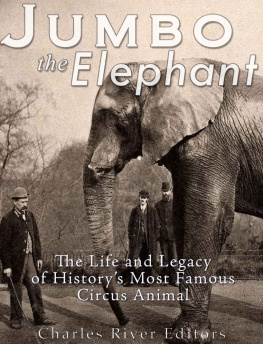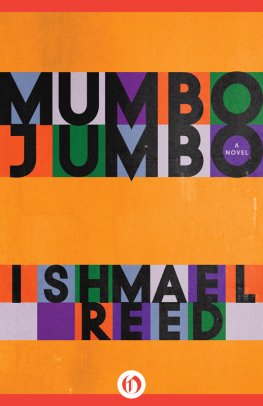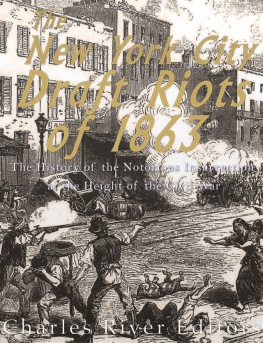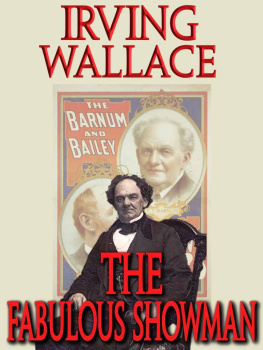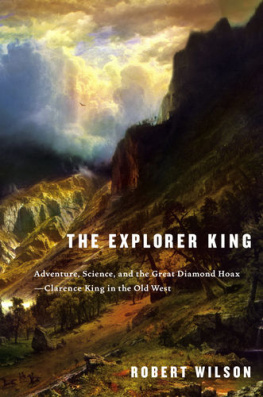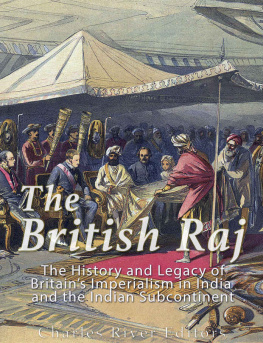Charles River Editors provides superior editing and original writing services across the digital publishing industry, with the expertise to create digital content for publishers across a vast range of subject matter. In addition to providing original digital content for third party publishers, we also republish civilizations greatest literary works, bringing them to new generations of readers via ebooks.
Sign up here to receive updates about free books as we publish them , and visit Our Kindle Author Page to browse todays free promotions and our most recently published Kindle titles.
Introduction

Jumbo the Elephant
I had often looked wistfully on Jumbo, but with no hope of ever getting possession of him, as I knew him to be a great favorite of Queen Victoria, whose children and grandchildren are among the tens of thousands of British juveniles whom Jumbo had carried on his back. I did not suppose he would ever be sold. P.T. Barnum
Modern views of animals range from hunters who pay big money to go on safaris in Africa to vegans who refuse to use even the wool or milk from a fellow creature, and as is the case with most controversies, most people fall in the middle, not wanting to kick a dog but still enjoying a good steak. However, in the early 20 th century, the standards were much different, with animals seen as strictly property to be gathered and used with little to no consideration about their health or feelings.
It was into this world that a little elephant later called Jumbo was born. He quickly learned the harsh realities of life when his mother was killed by hunters before his first birthday. Then he himself was taken from his sunny home and transported thousands of miles to soggy London, where he was expected to spend his days on display or earning his very limited keep by carrying small children for rides on his back. While he was fed hay, dry grass that was at least some substitute for the fresh greenery of the African plains, he was also fed both beer and hard liquor, oysters, cakes and candy, a diet that would have severely shortened his life had not a terrible accident ended it first.
During this time his one faithful friend, a man named Matthew Scott, tried to do the best he could to care for the animal and even meet his emotional needs. However, even Scott was hampered by the times in which he lived, especially when the command came to walk an 11 foot tall Jumbo into a crate barely big enough to hold him and to travel with him in these cramped quarters for a two week trip across another ocean to yet another unfamiliar land.
Ironically, it was that same trip that made Jumbo an international celebrity. Americans had loved traveling circuses for generations, and none represent the countrys love for entertainment quite like the most famous of them all: the Ringling Bros. and Barnum & Bailey Circus. Circus promoters have long been viewed as somewhat shady hucksters, but none could top P.T. Barnum, who used a blend of traditional circus entertainment, freak show exhibits, and outright hoaxes to create The Greatest Show on Earth. In fact, Barnum had specialized in circus entertainment decades before traveling circuses were truly a national sensation, particularly thanks to the popularity of the Barnum American Museum in New York City. Barnums museum offered something for everyone across its different halls, from poetic readings to animal exhibits, and all the while, Barnum was defiant when confronted by criticism, reminding people, "I am a showman by profession...and all the gilding shall make nothing else of me."
Barnum introduced America to Jumbo, and the elephant subsequently became one of the most legendary acts in the history of the circus. Barnum also featured exhibits like Joice Heth, an elderly African American woman Barnum advertised as a 161 year old who nursed George Washington. He also notoriously perpetrated hoaxes with General Tom Thumb and claimed to have a live mermaid, so its no surprise that Barnum is often apocryphally quoted as saying, Theres a sucker born every minute. While he didnt actually say that, he said something similar: Nobody ever lost a dollar by underestimating the taste of the American public.
Jumbo was not a pet to P.T. Barnum but an investment, an attraction that soon paid off in a big way. But Jumbo was also beginning to suffer the effects of his poor lifestyle even as fate led him toward his death on a crowded railroad track. Its a story that saddens many today, but in the 1880s, it was more or less the way things were. Nonetheless, the influence Jumbo had was fitting given his size, leading not only to similar acts across various traveling circuses but also to adaptations of his story, perhaps most notably Disneys Dumbo in the 1940s.
Jumbo the Elephant: The Life and Legacy of Historys Most Famous Circus Animal looks at Jumbos history, and the giant impact the elephant had on entertainment. Along with pictures of important people, places, and events, you will learn about Jumbo like never before, in no time at all.
Chapter 1: The Most Famous Pachyderm Ever
Probably the most famous pachyderm ever kept in captivity was the six-and-a-half-ton African elephant, Jumbo, which had come to the London Zoo as a baby, standing only about four feet high and weighing less than 700 pounds. At first he was rather troublesome but after a short time became perfectly manageable and grew very rapidly. Mr. Bartlett, the director of the garden, attributed this to good food and a daily bath in hot weather. In sixteen years he grew from four to eleven feet in height. Then the London Zoo sold him to an American circus, despite the fact that he had become their prime attraction. The reason lay in the fact that Jumbo was given to fits of excitement and terrified everybody who came near him except his keeper, Matthew Scott, who had extraordinary control over him. It was feared that if Scott fell ill, or was injured by the animal, the creature would be entirely unmanageable, for no other man dared go near him in his house. At night he would tear about and almost shake the house down. After becoming the property of Mr. Barnum, however, Jumbo's temperament seemed to change, probably due to the harder work and exercise which went with the life of a traveling circus. He became quite tractable and was exhibited all over Europe and America. - William M. Mann, Wild Animals in and out of the Zoo (1930)
Most biographies begin with the date and place of birth of the celebrity being described, but in the case of Jumbo the Elephant, this information is missing, for young Jumbo was born in secret, with only his pachyderm mother in attendance, somewhere in East Africa, likely near the Setit River. Prevailing wisdom speculates that he entered the world sometime around Christmas in 1860, but while he was still young, he lost his mother to hunters who chose to spare his life, likely in the hopes of hunting him down when he was full grown.
However, in a stroke of fate that changed his future, the infant elephant was captured by Taher Sheiff, a Sudanese hunter who was contracted to sell the infant to a zoo. Sheriff found a buyer in Samuel White Baker, a British explorer who in February 1862 purchased the young elephant. Baker later wrote, I was much interested with the tame elephants, which are taught to assist in various works, and are employed for moving huge stones into position, when building bridges, in road-making through the interior. When Baker bought the young elephant, he noted that he was about four feet tall and estimated his weight as 500 pounds. If his figures are accurate, and young Jumbo was developing normally, the little bull elephant would have been about a year old.

